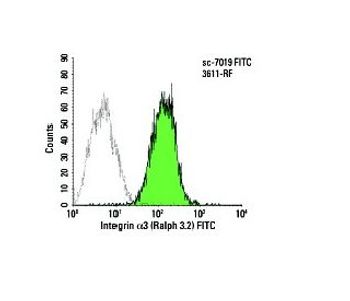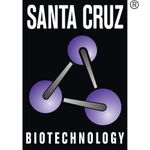Santa Cruz Biotechnology is a world leader in the development of products for the biomedical research market. Over the past 30+ years, the Company has focused on the ongoing development of research antibodies, siRNA and CRISPR Gene editing tools, biochemicals, labware and more recently has expanded into animal health care products. Santa Cruz Biotechnology has the highest commitment to quality and customer service.

Integrin α3 (Ralph 3.2) AC | Santa Cruz Biotechnology
mouse monoclonal IgG1; Integrin α3/ITGA3/CD49c Antibody (Ralph 3.2) is an IgG1 κ mouse monoclonal Integrin α3 antibody that detects Integrin α3 of rat origin by IP, IF and FCM. Integrin α3/ITGA3/CD49c Antibody (Ralph 3.2) is available as the non-conjugated anti-Integrin α3 antibody form, as well as multiple conjugated forms of anti-Integrin α3 antibody, including agarose, HRP, PE, FITC and multiple Alexa Fluor® conjugates. Integrins are heterodimers composed of noncovalently associated transmembrane α and β subunits. The 16 α and 8 β subunits heterodimerize to produce more than 20 different receptors. Most integrin receptors bind ligands that are components of the extracellular matrix, including fibronectin, collagen and vitronectin. Certain integrins can also bind to soluble ligands such as fibrinogen, or to counterreceptors on adjacent cells such as the intracellular adhesion molecules (ICAMs), leading to aggregation of cells. Ligands serve to cross-link or cluster integrins by binding to adjacent integrin receptors; both receptor clustering and ligand occupancy are necessary for the activation of integrin-mediated responses. In addition to mediating cell adhesion and cytoskeletal organization, integrins function as signaling receptors. Signals transduced by integrins play a role in many biological processes, including cell growth, differentiation, migration and apoptosis. The Integrin α3 chain, also known as very late (activation) antigen 3 (VLA-3), very common antigen 2 (VCA-2), extracellular matrix receptor 1 (ECMR1) and galactoprotein b3 (GAPB3), undergoes posttranslational cleavage in the extracellular domain to yield disulfide-linked light and heavy chains that join with β1 to form an integrin that interacts with many extracellular-matrix proteins.




























































